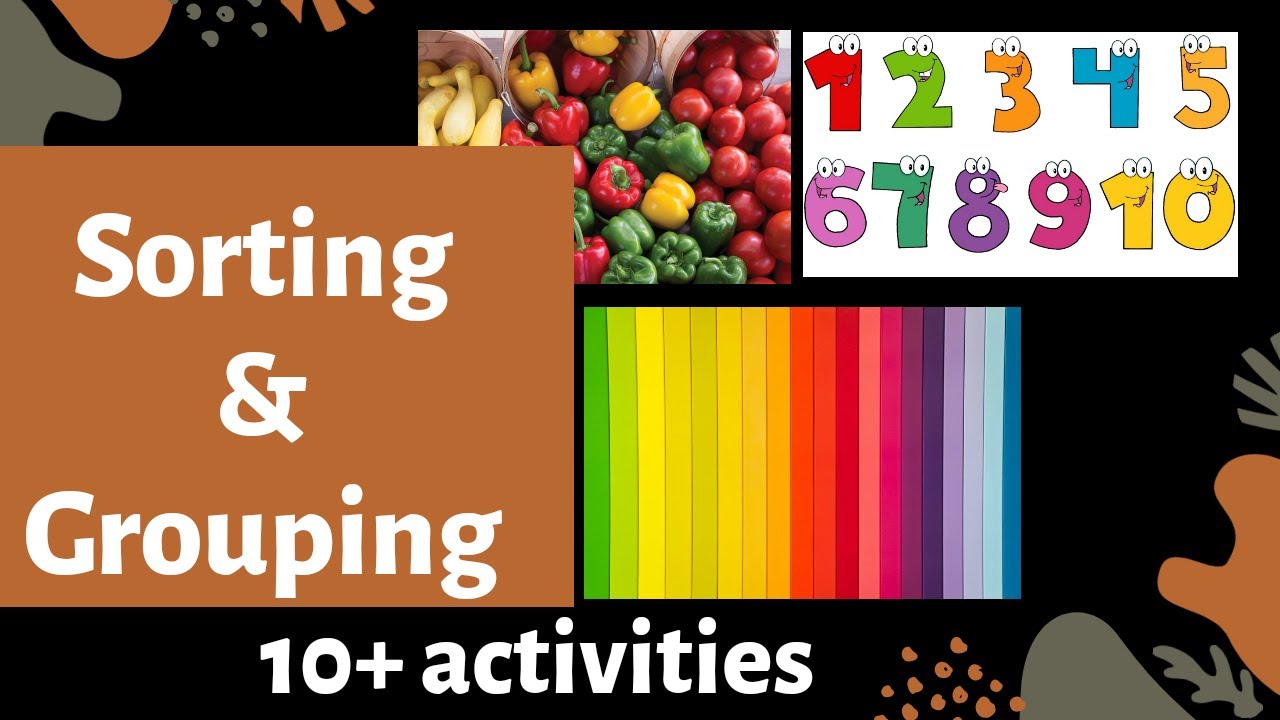
Mastering the Art of the Group Sorter: Efficiency and Organization Unleashed
In today’s fast-paced world, effective organization is paramount. Whether managing projects, analyzing data, or coordinating events, the ability to efficiently categorize and arrange elements is crucial. Enter the group sorter, a powerful tool and concept that streamlines the organization process, saving time and resources. This article delves into the functionalities, applications, and best practices of utilizing a group sorter to optimize workflows and enhance overall productivity. Understanding the core principles of a group sorter will empower you to tackle complex organizational challenges with ease.
Understanding the Group Sorter
At its core, a group sorter is a mechanism, either physical or digital, designed to arrange items into distinct categories or groups based on predefined criteria. These criteria can range from simple attributes like color or size to more complex characteristics like priority or relevance. The primary goal of a group sorter is to automate or simplify the task of sorting, reducing manual effort and minimizing errors.
The concept of a group sorter is not new. For centuries, humans have devised methods to categorize and organize information and objects. From ancient libraries with meticulously organized scrolls to modern-day warehouses with automated sorting systems, the need for efficient categorization has always been present. The evolution of technology has led to increasingly sophisticated group sorters, capable of handling vast amounts of data and complex sorting algorithms.
Types of Group Sorters
Physical Group Sorters: These are tangible systems designed to sort physical objects. Examples include:
- Mail Sorting Machines: Used in postal services to sort letters and packages based on destination.
- Assembly Line Sorters: Employed in manufacturing to sort products based on type, size, or quality.
- Recycling Sorters: Used in recycling plants to separate materials like plastic, glass, and metal.
Digital Group Sorters: These are software-based tools used to sort digital data. Examples include:
- Database Management Systems (DBMS): Allow users to sort and filter data based on various criteria.
- Spreadsheet Software (e.g., Excel, Google Sheets): Offer sorting functions to arrange data in rows and columns.
- Programming Languages (e.g., Python, Java): Provide libraries and functions for implementing custom sorting algorithms.
- Email Filters: Automatically sort incoming emails into different folders based on sender, subject, or content.
Applications of Group Sorters
The applications of group sorters are vast and varied, spanning numerous industries and sectors. Here are some notable examples:
Data Analysis
In data analysis, group sorters play a crucial role in organizing and categorizing large datasets. By sorting data based on specific criteria, analysts can identify patterns, trends, and anomalies that would otherwise be difficult to detect. For instance, a marketing team might use a group sorter to segment customers based on demographics, purchase history, or engagement level, enabling them to tailor marketing campaigns more effectively. [See also: Data Segmentation Strategies]
Project Management
Project managers rely on group sorters to organize tasks, resources, and deadlines. By categorizing tasks based on priority, status, or assignee, project managers can maintain a clear overview of the project’s progress and ensure that critical tasks are completed on time. Tools like Kanban boards and project management software often incorporate group sorter functionalities to streamline workflow. Using a group sorter helps in resource allocation, ensuring the right people are working on the right tasks at the right time.
Inventory Management
Efficient inventory management is essential for businesses of all sizes. Group sorters are used to categorize and track inventory items based on attributes like product type, location, and stock level. This allows businesses to optimize storage space, minimize waste, and ensure that products are readily available when needed. Automated warehouse systems often utilize sophisticated group sorters to manage large inventories efficiently.
Email Management
In today’s digital age, email overload is a common problem. Email filters act as group sorters, automatically categorizing incoming emails into different folders based on predefined rules. This helps users prioritize important messages, filter out spam, and maintain an organized inbox. By setting up effective email filters, users can significantly reduce the time spent managing their email and improve their overall productivity.
Logistics and Supply Chain
The logistics and supply chain industry relies heavily on group sorters to manage the flow of goods from manufacturers to consumers. Sorting systems are used in warehouses and distribution centers to categorize and route packages based on destination, shipping method, and delivery time. This ensures that packages are delivered efficiently and accurately. The use of advanced group sorters in logistics has significantly reduced delivery times and improved customer satisfaction. [See also: Supply Chain Optimization Techniques]
Benefits of Using a Group Sorter
Implementing a group sorter offers numerous benefits, including:
- Increased Efficiency: Automating or simplifying the sorting process reduces manual effort and saves time.
- Improved Accuracy: Minimizing human error leads to more accurate categorization and organization.
- Enhanced Productivity: Streamlining workflows allows individuals and teams to focus on more important tasks.
- Better Decision-Making: Organized data provides valuable insights that can inform strategic decisions.
- Cost Savings: Reducing manual labor and minimizing errors can lead to significant cost savings.
Best Practices for Implementing a Group Sorter
To maximize the benefits of a group sorter, it’s important to follow these best practices:
Define Clear Criteria
Before implementing a group sorter, clearly define the criteria that will be used to categorize items. This ensures that the sorting process is consistent and accurate. The criteria should be relevant to the specific application and aligned with the overall goals of the organization. For example, in a project management context, the criteria might include task priority, deadline, and assignee.
Choose the Right Tool
Select a group sorter that is appropriate for the specific task and the volume of data being processed. For small-scale tasks, simple tools like spreadsheet software may suffice. For larger and more complex tasks, specialized software or hardware may be required. Consider factors like cost, scalability, and ease of use when choosing a group sorter.
Automate Where Possible
Automation can significantly improve the efficiency of the sorting process. Look for opportunities to automate tasks like data entry, categorization, and reporting. This can free up valuable time for other activities and reduce the risk of human error. Many software tools offer automation features that can be customized to meet specific needs.
Regularly Review and Update
The criteria and rules used by a group sorter should be regularly reviewed and updated to ensure that they remain relevant and effective. As business needs change, it may be necessary to adjust the sorting process to reflect new priorities and goals. Regular reviews can also help identify areas where the group sorter can be further optimized.
Train Users
Ensure that all users are properly trained on how to use the group sorter effectively. This includes understanding the sorting criteria, using the software or hardware, and interpreting the results. Proper training can help prevent errors and ensure that the group sorter is used to its full potential.
Examples of Group Sorters in Action
A Hospital’s Patient Management System
Hospitals utilize sophisticated group sorters within their patient management systems. These systems categorize patients based on various factors such as symptoms, medical history, and insurance coverage. This enables the hospital staff to prioritize care, allocate resources efficiently, and ensure that patients receive the appropriate treatment. The group sorter helps streamline the patient flow and improve overall healthcare delivery. [See also: Healthcare Data Analytics]
An E-commerce Platform’s Product Recommendation Engine
E-commerce platforms use group sorters to personalize product recommendations for their customers. By analyzing customer data such as browsing history, purchase history, and demographics, the platform can categorize customers into different groups and recommend products that are most likely to be of interest to them. This enhances the customer experience and increases sales. This type of group sorter is a key component of modern e-commerce strategy.
A University’s Student Enrollment System
Universities use group sorters to manage student enrollment. These systems categorize applicants based on factors such as academic qualifications, test scores, and extracurricular activities. This allows the university to efficiently process applications, identify qualified candidates, and build a diverse student body. The group sorter ensures a fair and transparent admissions process.
The Future of Group Sorters
As technology continues to evolve, group sorters are becoming increasingly sophisticated and powerful. Artificial intelligence (AI) and machine learning (ML) are being integrated into group sorters to enable them to learn from data and adapt to changing conditions. This allows for more accurate and efficient sorting, as well as the ability to handle more complex and nuanced data. The future of group sorters lies in their ability to automate and optimize the sorting process, freeing up human workers to focus on more strategic tasks. Expect to see more advanced algorithms and intuitive interfaces that make group sorters even more accessible and effective. The development of quantum computing could potentially revolutionize the speed and capabilities of group sorting algorithms, allowing for the analysis and categorization of datasets previously deemed too large or complex. The group sorter is more than just a tool; it’s a critical component of modern organizational efficiency.
Conclusion
The group sorter is a versatile and powerful tool that can be used to enhance efficiency, improve accuracy, and streamline workflows in a wide range of applications. By understanding the different types of group sorters, their applications, and best practices for implementation, individuals and organizations can unlock their full potential and achieve significant benefits. Whether you are managing data, projects, inventory, or email, a well-implemented group sorter can help you stay organized, make better decisions, and ultimately achieve your goals. Embrace the power of the group sorter and transform the way you organize your world.
